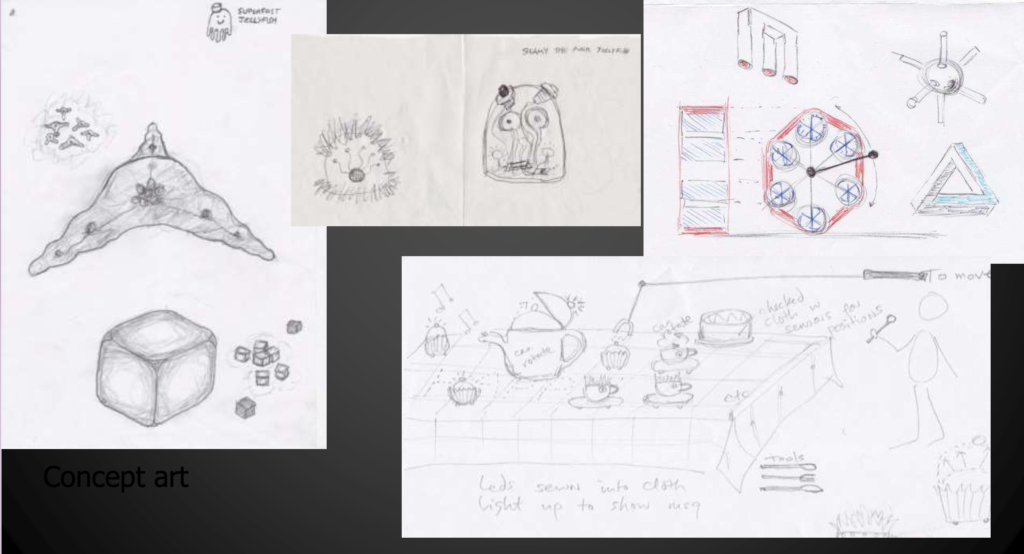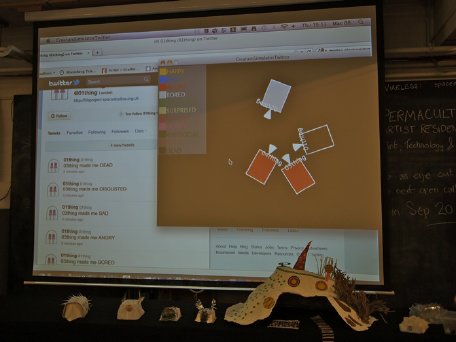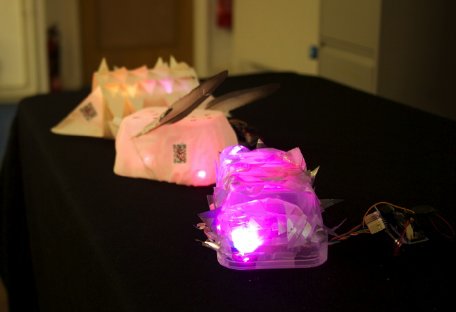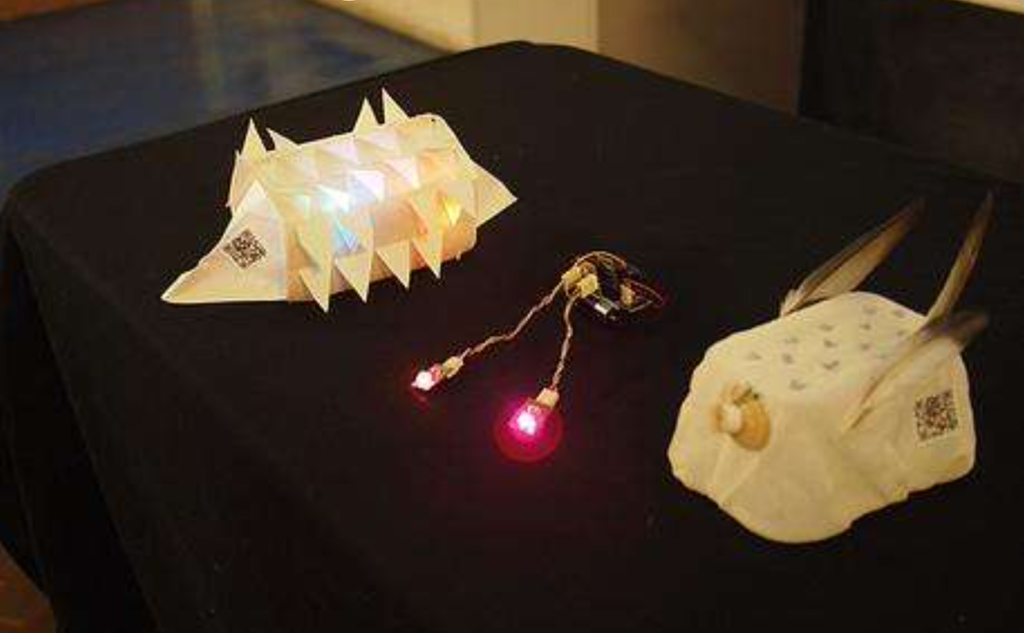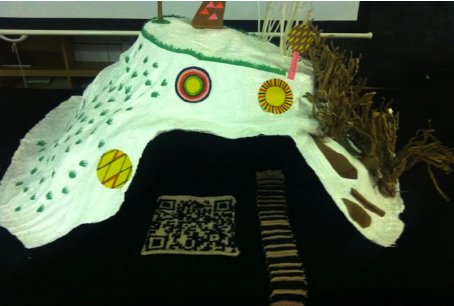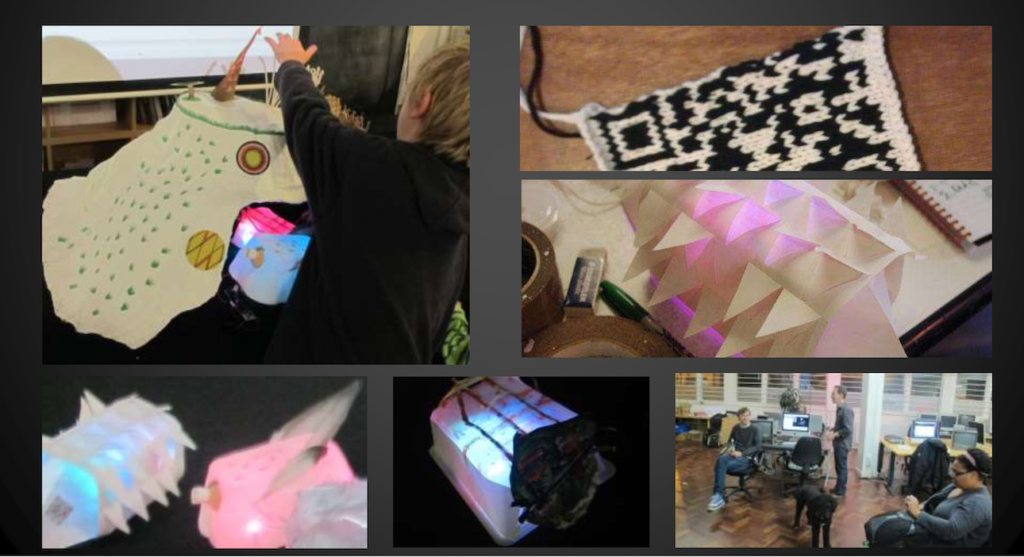> The Life Project
Robots and Emotion
2011-2012
Robots, Avatars, Open Source, Twitter, QR Code, Emergence, Virtual Lifeform, Craft, Design, Workshop.
> Timeline
Started April 2011, Public Exhibition, October 2011, Presented at the EVA Conference 2012
> Collaborators
- Evan Raskob – Team Leader, Techical & Creative
- Camille Baker – Artist & Creative Concepts
- Nick Rothwell – Coder & Artist
- Fiona French – Artist & Coder
- with Andrew Crowe, Giorgio Demarco, Steven Fortune, Gustavo Guerrero, Lori Ho, Simon Katan, Chris Lowell, Manuel Mazzotti, David McLellan, Francesca Perona, Darren Perry, Elvia Vasconcelos and support from SPACE Studios
> Abstract
The Life Project explored issues of psychological projection into technology by diving into the convoluted relationship between practical purpose and emotional attachment, through both the creative act of designing and making robot entities with artificial emotions, and the social act of engaging with them. This process explores the concept of body representation through a multi- identity in virtual and physical blended space. In a lesser sense, it also suggests a future world of collaboration between physical and virtual forms, enabled by new forms of representation in blended worlds.
> Outcomes / Impact
The Life Project was originally conceived by Openlab Workshops as a collaborative workshop series for a diverse group of artists, designers, makers and musicians, developed as part of the Permacultures exhibitions at SP ACE Studios (SPACE 2012). The aim of the workshops was to explore the boundary between the virtual and the real by examining our complex, mutually dependent relationship with technology. This aim was to be achieved by designing and building an “ecosystem” of small digital Creatures (or robots) that would mutually interact and influence each other, and also interact with human participants who could choose to feed them and/or alter their environmental parameters in meaningful ways.
Inspiration was taken from a variety of sources including generative systems such as Conway’s Game of Life as an investigation of emergent behaviour, ecological and environmental concerns, digital pet toys such as Tamagotchi, video games and AI, as well as current research into modeling emotional intelligence systems.
The Life Project has successfully met its original aim of exploring embodiment and identity through the collaborative process of creating an “ecosystem” of little machines that live, grow, communicate and die with one another, all in the presence of humanity.
The major challenges can be summarised as follows:
(i.) Creative Collaboration: Facilitating a large, diverse group of creative people to work and collaborate effectively together is a daunting task, since The Life Project provided a rare opportunity for designers, crafters, artists, programmers and engineers to develop ideas together on a shared brief, problem-solving and negotiating milestones from concept to finished artefact.
(ii.) Developing an Emotional Intelligence – The Life Project explored how software and hardware could be used to represent and communicate changing emotional states. Experiments used software probability tables, animated lights, sounds, and tweets – a wide range of outputs, each with their own complexity.
(iii.)Communication and Interaction – The Life Project investigated modes of communication between software and hardware agents and people. Using Infra- red LEDs (light emitting diodes) as transmitter/receiver between Creatures and Environment; using Twitter to respond to people via Social Networks; using QR Codes to enable creature husbandry from the public – again with their unique requirements to interconnect with the rest, adding another layer of complexity (and chaos).(iv.) Look and feel – The Life Project provided an opportunity for community involvement in the later stages of project, which required some of the complexity to be made more readily understandable and accessible for simple engagement and interactivity.
(v.) FLOSS Integration – The FLOSS community and technology was essential to this project. Without the Arduino community, and their companion JeeNodes, the team would have had to purchase expensive proprietary systems or spend much more time developing core technology. The team reciprocated by distributing all code, diagrams, and blogging about the development process.
The team intended to maintain the project as a communal art installation, organising future workshops and inviting members of the public to contribute their own creative designs to and interact with a slice of digital ecology (but this didn’t happen). The aim was to provide future teams the opportunity to study the interaction and the effectiveness of the concepts and intended user interaction, in order to draw conclusions about our complex and interdependent relationship with technology and the “natural” world.

